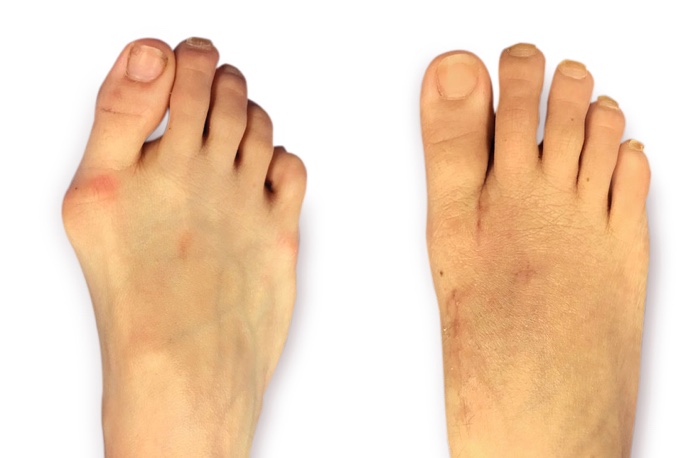Lapiplasty Negative reviews: Have you ever found yourself in a position where you can’t buy a shoe you like because of a bunion problem you have?
Although I haven’t had such an experience, seeing how disappointed Sonia, my girlfriend, felt when we went to get a pair of shoes for a birthday party made me feel bad.
Sonia has had a bunion for years now. Apart from the pain and discomfort she feels, she finds it interfering with her daily life.
As a good friend, I decided to help her find a solution since the conservative treatments she has been undergoing haven’t helped much.
It was in my quest to get an alternative that I learned about Lapiplasty. Lapiplasty is an alternative to traditional bunion surgery. It involves the use of unique tools to correct a bunion.
It treats bunions three-dimensionally to correct the root cause; it’s often called “3D bunion correction surgery.
But here is the challenge! Even with my quest to help my friend, I had to slow down when I read about some patient’s feedback about this procedure.
That is why I decided to conduct a comprehensive review of Lapiplasty. In our Lapiplasty reviews, you will learn more about Lapiplasty, how it works, its possible complications, and negative reviews from patients who have undergone the procedure before.
Key Takeaways
- Lapiplasty is a modern process for treating the etiology of bunions, commonly referred to as hallux valgus.
- Statistically, over 65 million Americans are affected by a bunion deformity.
- Patients are able to bear weight on their feet within days of labiaplasty surgery.
Lapiplasty Negative reviews: What is Lapiplasty?
Lapiplasty or Lapiplasty Bunions Surgery is a modern process for treating the etiology of bunions, commonly referred to as hallux valgus.
Bunions are bony projections on the side of the big toe that develop from structural misalignment in the foot. They can be quite uncomfortable, making daily activities like putting on shoes or walking challenging.
Lapiplasty aims to rectify the unstable joint that causes the three-dimensional deformity associated with bunions, in contrast to standard bunion treatments that only address the symptoms.
By securing the weak foundation and realigning the complete bone structure in three dimensions, this surgical method uses cutting-edge technology to stop recurrence.
Read ALSO: Yoga-Go Reviews: Is Yoga-Go Legit? Pros, Cons, Features, and Pricing
How Does Lapiplasty Surgery Work?
Although I haven’t gone through Lapiplasty Surgery before, I took the time to research how it works.
During my research, I learned that Lapiplasty involves using a unique tool called the Lapiplasty Positioner to realign metatarsal and sesamoids. During the process, sophisticated tools like the Lapiplasty Cut Guide and Compressor and Mini-Incision Precision Instrument Set are also used.
Basically, they are often used to maintain the 3-plane correction and apply precise compression to the joint surfaces.
Following this correction, patented titanium plates are utilized to stabilize the metatarsal position, thereby enhancing stability and accelerating the shift to weight-bearing after surgery.
Note that one thing everyone who has had this surgery has in mind is correcting their metatarsal bone and fixing any deformity.
Is Lapiplasty and Traditional Bunion Surgery the Same?
Not at all. Lapiplasty bunion surgery is different from Traditional Union surgery, which is an old method of bone realignment.
Although both options are still used today, they differ. Traditional Bunion Surgery basically eases the pain and provides relief, which means it doesn’t provide a permanent solution to bunions.
Whereas, Lapiplasty provides a comprehensive solution to bunion correction with zero chances of reoccurrence in the future. That means it offers relief from pain and drastically reduces the chances of recurrence.
Read Also: Organic Fit Reviews: Is Organic Fit App Legit? Features, BENEFITS and Pricing
What are the Pros and Cons of Lapiplasty?
Pros of Lapiplasty Bunion Surgery
Every surgery has an objective. There’s always a problem every surgery aims to offer solutions to. These solutions are most often termed the benefits, advantages, or pros.
For Lapiplasty Buinon Surgery, which has to do with bone realignment, one of its benefits is proper realignment of bones and quicker recovery. Now, the quicker recovery is when compared to traditional procedure.
Also, Lapiplasty is less painful and invasive compared to traditional bunion surgery. For clarity, let me break my points down.
The Recovery Timeline is Faster
After interviewing some people who have gone through Lapiplasty Bunion Surgery, my team concluded that Lapiplasty has a faster recovery timeline. Weight-bearing in a walking boot usually begins within 2 weeks.
Then, the light activities resume in 4-6 weeks. Some of the patients transitioned to wearing comfortable shoes at 6-8 weeks and resumed their activities at 4-6 months.
The procedure takes about 4-5 months to complete. Within the stipulated time, patients can return to their daily routine, sports, and high-intensity activities.
Cause Less Pain and Discomfort
Another advantage of opting for Lapiplasty Bunion surgery is that it’s less painful. This is because the sophisticated equipment used for bone correction cuts across all three dimensions, addressing bunion pain more effectively than traditional bunion surgery.
As a patient, you will get a nerve block that numbs the foot for 24 hours after surgery, which significantly reduces postoperative pain.
Lower Risk of Recurrence
Another important advantage of lapiplasty is its ability to prevent bunions from recurring. The instability at the base of the toe joint is the primary cause of bunions, and this surgery aims to address it. It reduces the likelihood of a bunion recurrence in this way.
According to research, 96.8% of patients who underwent Lapiplasty surgery were able to retain their three-plane bunion repair, with a 1.6% likelihood of having a troublesome non-union issue.
This shows a low chance of recurrence, demonstrating a satisfactory recovery from bunion surgery and making lapiplasty a potential long-term option for those who suffer from it.
Cons of Lapiplasty Bunion Surgery
Even though lapiplasty has several advantages, it’s important to take any potential drawbacks into account.
These include possible side effects, including
- Avascular necrosis and arthritis. This involves the death of bone tissue due to impaired blood supply.
- Nerve damage that could result in restricted or painful foot sensations. It can also cause uncomfortable and altered sensations in the feet.
- Some individuals may continue to have pain and swelling.
Scarce Specialized Surgeons Available
Another disadvantage is the scarcity of surgeons certified to perform Lapaplasty, a minimally invasive surgery. The number of surgeons who can execute the treatment is limited because specialized training and equipment are required.
Additionally, the concentration of these specialist surgeons in particular areas may restrict patient access based on where they live.
In certain instances, the minimally invasive method may require patients to travel, which may complicate their available treatment alternatives.
How Much Does Lapiplast Bunion Surgery Cost?
I’m not sure about this, but some patients said its cost ranges from $3,500 to $12,000. From what I figured out, this cost varies. It depends on geographical location and the patient’s health needs.
Here is my advice: Research and compare the costs of different local surgeons and understand the specifics of insurance coverage, including deductibles, co-pays, and coinsurance, before making your choice.
Are there Side Effects of Lapiplasty Bunion Surgery?
Yes. In addition to the cons mentioned above, other side effects can be called possible complications of Lapiplasty surgery.
Some patients complained of cracks and fractures caused by the implants used in the Lapiplasty procedure. This results in them revising the surgery or going for Lapiplasty removal, which is an extra cost.
Patients may also experience implant migration or adverse reactions to the foreign body, potentially causing discomfort, abnormal sensations, or correction delays.
How to Know If Lapiplasty for Right for You
Is it every Bunion problem that requires Lapiplasty Surgery?
The answer is no. That the bunion is severe doesn’t mean you should run to a surgeon the next day. Before deciding on whether to opt for Lapiplasty surgeon, there are stages you must first go through.
Run a test to Know how Severe the Bunion is?
Finding out how severe your bunions are is an important first step. Is the bunion painful, reddish in color, swelling, and an obvious lump?
Healthcare providers use a range of diagnostic instruments to gauge the severity of bunions and help them decide between conservative treatment and surgery.
Examining Non-Surgical Options
It’s important to investigate non-surgical options before considering lapiplasty. Custom foot orthoses can help patients with Hallux valgus effectively manage their symptoms and improve their function.
Having a podiatrist consult
Before proceeding with the treatment, it is crucial to seek advice from a podiatrist with experience performing lapiplasty.
A podiatrist can evaluate your foot anatomy, degree of pain, and general function to determine whether you are a good candidate for lapiplasty.
How To Prepare for Lapiplasty Surgery
If you want to go ahead with a lapiplasty, there are steps you may take to get ready for the procedure and the healing period that follows.
Pre-Surgery Planning
Making the right preparations will help your recuperation go more smoothly and comfortably. Tell your loved ones that you will require help after your surgery, especially if you are a single person.
Consider transferring necessary goods to the first floor of your multi-story home if you reside there in order to avoid stairs during the first few weeks of rehabilitation.
Additionally, to reduce the amount of cooking and cleaning required following surgery, prepare meals ahead of time, stock up on snacks, and use disposable dishes.
Post-Surgery Care
Some steps can be performed after lapiplasty to ensure a speedy recovery. Post-operative pain management usually involves the use of strong anti-inflammatory medications and prescription opioids.
Even if the pain seems to be under control right now, it’s imperative to take prescription pain medicine on time in order to maintain pain relief.
To avoid infection, it’s also critical to maintain the surgery site dry and clean. Use a cast protector to keep the operative area dry while taking a bath. Additionally, cooling the surgery site aids in the management of pain and edema.
Read Also: Organic Fit Reviews: Is Organic Fit App Legit? Features, BENEFITS and Pricing
Lapiplasty Negative Reviews from Users
Before wrapping up, let’s look at some of the negative Lapiplasty reviews from patients who have undergone surgery before. Ensure you read through them before you decide to have Lapiplasty bunion surgery.
After reading this article, I know for a fact that it is my duty as a patient who has undergone the lapiplasty procedure to tell people that it is in fact, one of the worst decisions a person can make. I did not choose this procedure; the doctor basically did it without actually telling me how the procedure would be done, and now am suffering the consequences of my lack of knowledge 11 months post-surgery. I now have developed Osteoarthritis due to this midfoot fusion that I had no idea would happen. I lost the ability to plantar flex my joint and have limited dorsiflexion. There was a time when I ran 6-5 miles twice to three times a week. This lapiplasty BS is a scam, and the percentage of success are lie. The biomechanics of a person’s foot will determine its natural shape. Fusing the midfoot is not the answer. Thony Belizaire
I would agree. I am still having problems 9 months post-op, and now seeking hardware removal. –Monica Hamilton
I am wondering about the transparency and honesty of the failure rates of Lapiplasty. I had a procedure in November 2021. Yesterday, which was six months later I had my hardware removed. Post Lapiplasty, my foot became irritated and swollen, and with more time, I felt more discomfort. I am hopeful that having the hardware removed will resolve these issues. Per my surgeon, my foot is perfectly aligned, and my new bone growth is excellent. Now, time will tell; however, I know two other people who had the same procedure and continue to feel that hardware and discomfort in their feet. Had I been told to expect two surgeries, I would have declined this procedure. I understand that there are risks, but I think this adverse event is more common than being published. –C Spitz
I had a great surgeon and it is exactly the way this procedure is supposed to turn out. However, I think the hardware is the sucky part. Sometimes I get a sudden nerve pain. I did write the company and told them what I thought of the hardware, they said I had to talk to my surgeon. It isn’t my surgeon that’s the problem because he did it perfectly and it turned out how the procedure is supposed to. I’m three months postop and yeah, I have to take NSAIDs to get the swelling down. –Deb Bouska
Thanks agree!!! Total failure on my end. Nerve damage, intense pain and Drs just gaslight you. I researched this procedure for a year and thought I had the best Dr.
Now 6 months of 11 scale pain. I think we were all lied to about the outcome. -LM
Hi! I had my lapiplasty surgery in January of 2021. I did a lot of research and read a lot of reviews before doing this procedure. I have been in pain ever since my surgery. The top of my foot and inside of my foot where the hardware is located, is where most of my pain is. I have been putting off the surgery to get my hardware out because I really don’t want to do another surgery. I can still run on it 3-4 miles a day but it becomes red and swollen and is painful to walk on afterward, yet I can’t give up my daily runs. I would not recommend lapiplasty to anyone. I would rather have a bunion than be dealing with this pain. I would love to warn others of the possible bad outcomes of this surgery. –Kariann Brabec
Three months after my surgery, my foot still swells and is very painful. Constant throbbing causes sleep deprivation. I wish I had never had this procedure. It’s almost fall, and I can’t wear any of my shoes without a lot of pain. Winter is going to be horrible! I guess I’ll have to buy larger shoes. –Rhonda
Wow, guys, thanks for your honesty. It’s so sad the way they make this surgery the holy grail for bunions. But if it is let’s hear your story. I’m only wondering if there is. I’m doing my research still because even my foot doctor says to many complaints, and he sometimes tells me not to do it. But I also think he wants me as a regular. –John Rosado
I had this procedure Dec. 2018. Worst decision of my life, and I have had nothing but problems since. This week, I am undergoing surgery again with another surgeon to correct this mess. My second toe has an implant in it, and the toe is on top of my big toe. I haven’t been able to wear shoes except flip-flops, even in the winter. If you are thinking of having this surgery, don’t do it is my advice. Stick to the tried and true techniques. –Karen
FAQs about Lapiplasty Negative reviews
What Can You Expect If You Choose Lapiplasty?
Patients who choose lapiplasty report better results and quicker recoveries. Still, lapiplasty is a surgical procedure. Choosing to undergo any surgical procedure is a weighty decision.
Who is not a candidate for Lapiplasty?
If you have bone loss or degeneration, are morbidly obese, or have a known sensitivity to implanted devices, you may not be a candidate for Lapiplasty surgery. Pediatric patients under 12 years old and adolescent patients with open growth plates may also not be eligible.
Do any bones get cut during Lapiplasty surgery?
Unlike Traditional bunion surgery, lapiplasty surgery does not involve cutting the bone. Instead, specific instruments rotate the bone back to its normal position.
What is the downside of bunion surgery?
One potential downside of bunion surgery is the risk of complications such as recurrence of the bunion, nerve damage, and continued pain, as well as the possibility of overcorrection leading to the big toe extending away from the other toes. It’s important to consider these risks in relation to your specific medical condition.
Conclusion about Lapiplasty Negative reviews
Although Lapiplasty’s cutting-edge technology provides a less invasive bunion correction method, patients should be prepared for the possibility of secondary problems, including pain following surgery.
People can decide if lapiplasty is the best course of treatment for them by considering the advantages against the possible risks and drawbacks. In the end, patients should always put their health and well-being first when thinking about a medical procedure.






